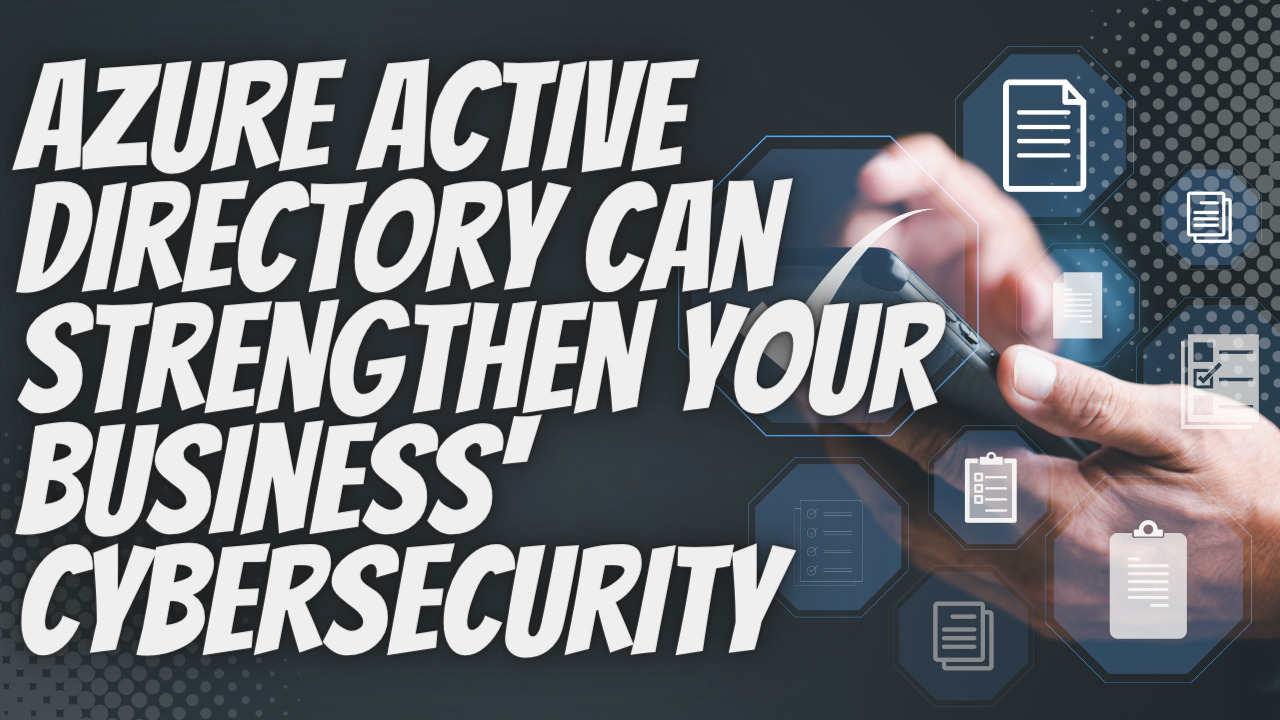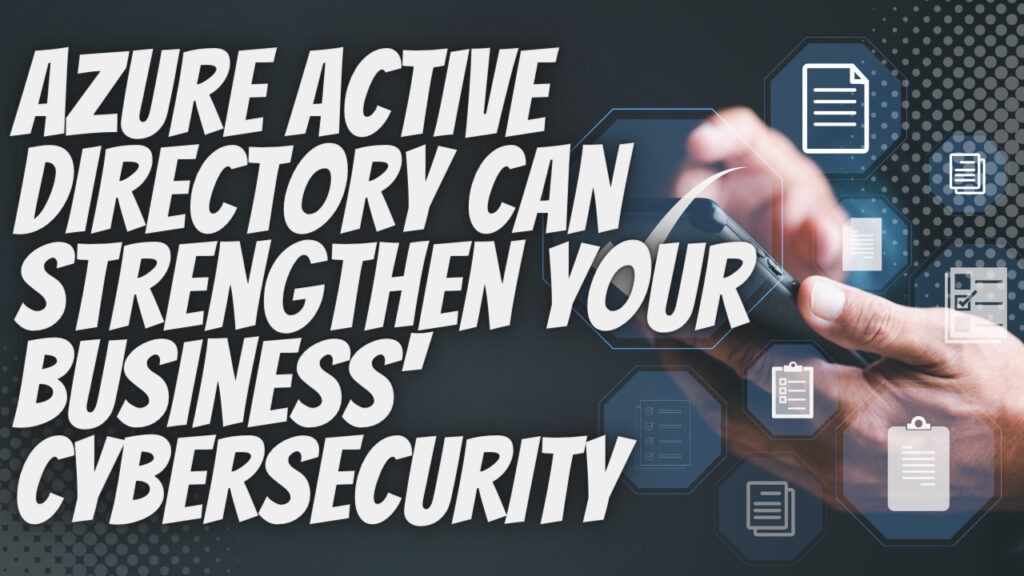How Azure Active Directory Can Strengthen Your Business’ Cybersecurity and Save Money
Key Points in This Article:
- Azure Active Directory (Azure AD) is a powerful cloud-based identity and access management application.
- Often confused with Active Directory, Azure AD provides secure authentication for users accessing Microsoft 365 / Office 365 and many common SaaS applications.
- Azure AD provides businesses with enhanced security, compliance tools, centralized identity/access management, greater flexibility, scalability, and cost savings.
If you’re looking for a great way to manage employee access to cloud-based applications, Azure Active Directory (Azure AD) is ideal. It’s an identity and access management service offered by Microsoft that can help you shore up a potential vulnerability in your cybersecurity defenses. It’s sometimes confused with Active Directory (AD). And while there is some overlap, the differences between the two should be understood to ensure you manage employee accounts most effectively.

What Is Active Directory?
To fully understand and appreciate Azure AD and its benefits, it’s helpful first to understand what AD is. AD is a database that stores and keeps track of your employee accounts and devices. It lives on a Domain Controller, a server that manages user, PC, and server access centrally. But it is AD on the Domain Controller that provides authentication and access to resources on the network. It’s what allows your marketing staff to access their files on their file server while restricting them from accessing accounting records on an accounting file server.
How Azure AD Differs from AD
Azure AD is an online authentication application comprised of both users and groups. When you log into an application that is part of Microsoft 365 or Office 365, Azure AD authenticates your access. But its authentication function is not limited to Microsoft-based products. Third-party developers can use Azure AD to manage their applications’ access and authentication. Many leading SaaS applications such as Adobe, Dropbox, Salesforce, Slack, Zendesk, and more use Azure AD. Microsoft / Office 365 users can connect to both Microsoft applications and these SaaS applications with a single sign-on (SSO).
It’s important to note that Azure AD is not a substitute for AD. AD helps you manage on-prem hardware and software. Azure AD is not designed for connection to servers. Nor are there functions like Group Policy or support for secure authentication for devices that share a domain. Instead, Azure AD offers in-house IT administrators and MSPs offering managed IT with an excellent tool to manage user access to cloud-based applications.
Can you use both? Absolutely. If you’re using Office 365, by default, users will have two access credentials – one for AD and one for Azure AD. However, Microsoft offers a free software called Azure AD Connect that allows you to synchronize the two passwords. Azure AD is also ideal if you’re operating purely in the cloud, but you’ll still need AD to manage the devices you use to connect to the cloud.
Further, if you’re using software applications unavailable as SaaS, you can move them to Virtual Machines (VMs). You can domain join multiple VMs using a PaaS service known as Azure Active Directory Domain Services (Azure AD DS). Azure AD DS and Azure AD automatically sync, providing users access to your VM-stored applications.
How Azure AD Provides Secure Authentication
Additionally, Azure AD offers developers a method to add SSO to their SaaS apps. When a user signs on, Azure AD determines their authority to access, then sends them to a preapproved Redirect URI for the application. Redirecting users to a preapproved URI helps prevent criminals from intercepting users and redirecting them to a malicious site.
And because Azure AD handles the authentication process, developers don’t need to worry about storing passwords or the risks of doing so. Nor do they have to worry about access administration, which can become time-consuming and costly when you consider forgotten passwords, lockouts, and resets. All administration is handled securely by Azure AD rather than by developers, which is one reason why so many SaaS apps use it.
Azure AD also offers developers multiple APIs that can help them build customized experiences for users. If you’re in the SaaS business, Azure AD can give you the tools to help you distinguish your app from others.
Other Benefits of Azure AD
Azure AD also helps businesses and developers in several other ways, including enhancing security, facilitating compliance, providing centralized management, increasing scalability and flexibility, and reducing expenses.
Enhanced Security
Not only does Azure ID provide secure authentication, but it offers conditional access and multi-factor authentication as well. Both of these functions can help make it harder for criminals to access your network.
Greater Compliance
Azure AD can also play an important role in your compliance efforts. It offers a comprehensive set of auditing and reporting features to help you meet internal control, legal, regulatory, or third-party disclosure requirements.
Centralized Management
With Azure AD, IT administrators can easily manage user roles and identities, configure security settings and control application access, all from a central location. Further, Azure AD automates the password reset process, reducing the administrative burden on internal help desks.
Increased Scalability and Flexibility
As with other cloud-based services, Azure AD is highly scalable. You can grow or shrink your user base as your organizational needs demand. It’s also simple to synchronize with AD, so as you increase your remote footprint, you won’t struggle to keep those onsite connected with their co-workers. Further, many industry-leading apps use Azure AD, allowing you to connect and utilize them confidently.
Reducing Expenses
Because you can reduce your user base as needed, you will only find yourself paying for what you need at any time. And when you’re moving more users to cloud operations, Azure AD’s pay-as-you-go pricing model can significantly benefit your IT expenses. Because so many apps use Azure AD, you won’t need to pay a third-party systems integrator to create a seamless and secure authentication process for your business.
With cybersecurity a top priority for businesses, it’s critical to have a robust access and identity management system for cloud-based applications. Azure AD is a powerful tool that can keep your users, network, and resources secure.

